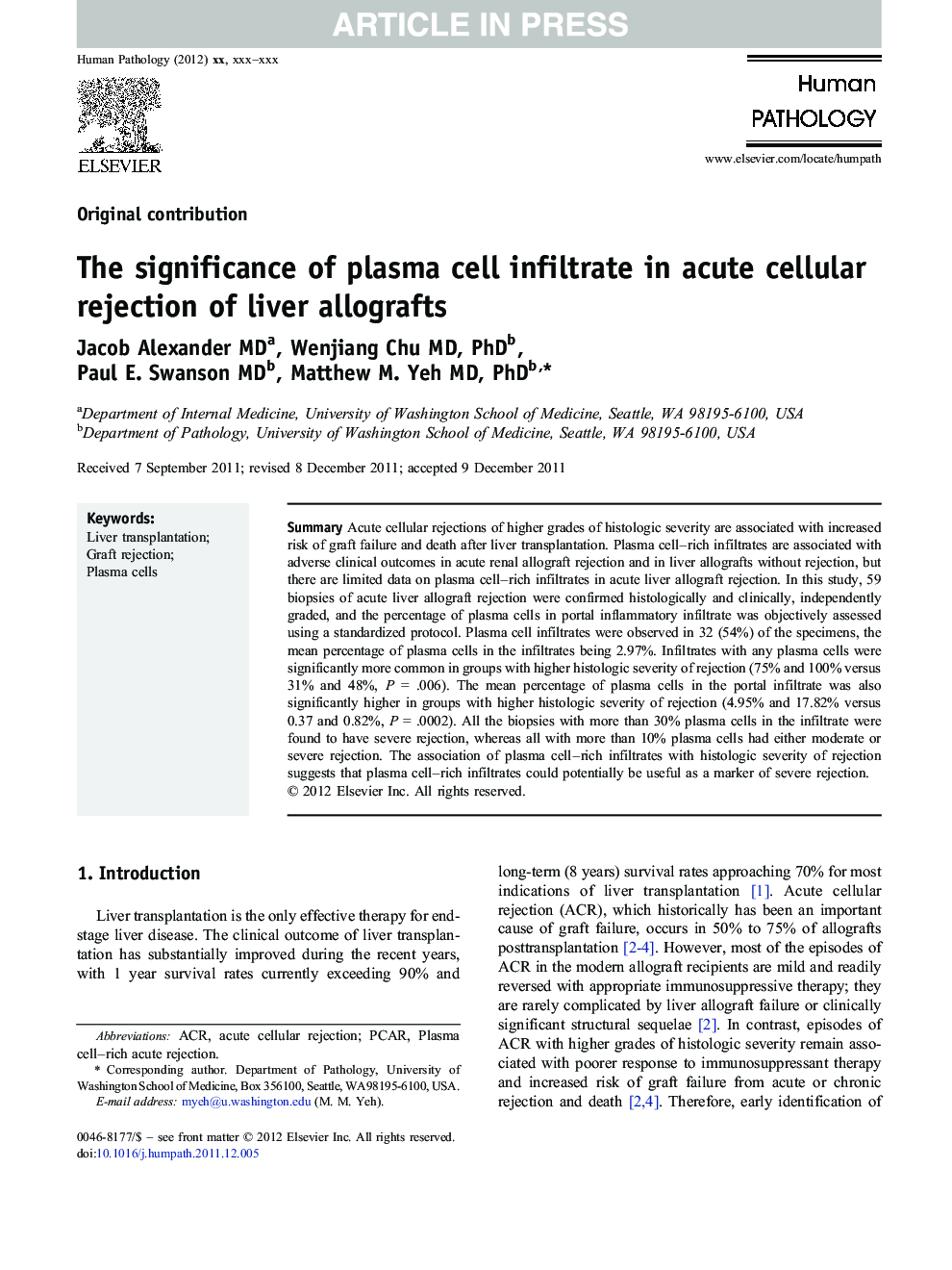| کد مقاله | کد نشریه | سال انتشار | مقاله انگلیسی | نسخه تمام متن |
|---|---|---|---|---|
| 4133129 | 1271410 | 2012 | 6 صفحه PDF | دانلود رایگان |

SummaryAcute cellular rejections of higher grades of histologic severity are associated with increased risk of graft failure and death after liver transplantation. Plasma cell–rich infiltrates are associated with adverse clinical outcomes in acute renal allograft rejection and in liver allografts without rejection, but there are limited data on plasma cell–rich infiltrates in acute liver allograft rejection. In this study, 59 biopsies of acute liver allograft rejection were confirmed histologically and clinically, independently graded, and the percentage of plasma cells in portal inflammatory infiltrate was objectively assessed using a standardized protocol. Plasma cell infiltrates were observed in 32 (54%) of the specimens, the mean percentage of plasma cells in the infiltrates being 2.97%. Infiltrates with any plasma cells were significantly more common in groups with higher histologic severity of rejection (75% and 100% versus 31% and 48%, P = .006). The mean percentage of plasma cells in the portal infiltrate was also significantly higher in groups with higher histologic severity of rejection (4.95% and 17.82% versus 0.37 and 0.82%, P = .0002). All the biopsies with more than 30% plasma cells in the infiltrate were found to have severe rejection, whereas all with more than 10% plasma cells had either moderate or severe rejection. The association of plasma cell–rich infiltrates with histologic severity of rejection suggests that plasma cell–rich infiltrates could potentially be useful as a marker of severe rejection.
Journal: Human Pathology - Volume 43, Issue 10, October 2012, Pages 1645–1650